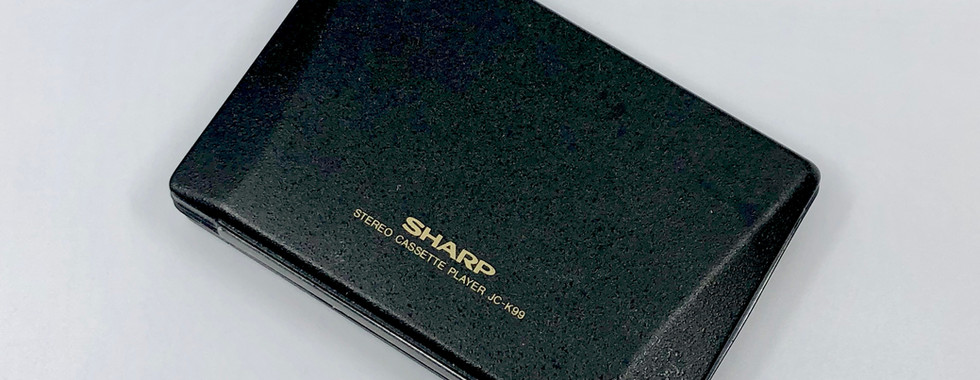Sharp JC-K99 - The World's Lightest Portable Cassette Player
- CK
- Mar 1, 2019
- 3 min read
In the golden days of cassette players between the 80s and the 90s, the market dominated by tech giants such as Sony was extremely competitive. Manufacturers had to come up with all kinds of technologies and extraordinary designs to try to gain market shares. In the late 80s and early 90s, technology had matured enough that companies were able to pack lots of functionalities into a small package. As miniaturization continued it eventually hit a bottleneck with conventional design and material. So in order to create an even lighter and more portable cassette player, Sharp decided to use carbon fiber case for its JC-K99 debuted in 1990! Every time I hear carbon fiber I can't help but think of exotic sports cars such as Ferrari, Lamborghini or Aston Martin, which carbon fibers body panels are often used to significantly reduce weight while maintaining the structural rigidity. Well, the JC-K99 has similar property. Weighted at 3.5 ounces including the rechargeable battery, the JC-K99 feels very sturdy and yet extremely light, so light that I thought It is an empty case. In fact, it was the lightest portable cassette player in the world ever!


The JC-K99 is only slightly larger than the cassette tape itself. It easily fits into any pocket. In order to create such a light weight and slim player certain compromises had to be made. Physical controls people expect to see such as the play, stop, fast forward buttons are no where to be found in the clamshell case. There's a tiny sliding door hides the slot that holds the battery, a headphone jack and a red power-on/battery-indicator that's it.

It relies on the remote control to operate most of the basic functions. There are two square buttons for stop and play/reverse play, while two round buttons start fast-wind and activate the X-Bass bass boost sound effect. There's a tiny thumbwheels on the edge controls the volume. There's no LCD on the body or the remote control itself to provide any visible or tactile feedback, To solve that issue, Sharp has encoded functions with audible cues. Each function emits a unique pattern of beeps through the headphones.

Less frequently used function can be accessed from the inside. When the clamshell case is opened three additional toggle switches are revealed. You can control the NR (Noise Reduction), high / low output as well as tape bias (normal, CrO2, metal).


The in ear headphones sound reasonably good and are quite comfortable for long time listening. If you prefer different headphone such as the on ear or over the ear style headphones, the supplied earbuds unplug from the remote control box allowing you to insert your own headphones. However, keep in mind that it may not be powerful enough to drive a low impedance headphone because the headphone output is only about 10 mw according to the specification.

Sharp supplies a battery charger with the quick-charge battery. A one-hour charge provides up to 2.5 hours of playing time. Sharp also includes an external battery case for using a single AA battery, which powers the unit for 5 to 6 hours. It connects in parallel with the rechargeable battery to provide 7 to 8 hours of play time, which is plenty even for a short flight.

The manufacturer suggested retail price (MSRP) for the Sharp JC-K99 was $250, which put it in the premium portable cassette player category. The slick design, the exotic material, the weightlessness and the cool factor is probably enough to justify the hefty price. Sharp certainly owned the bragging right of creating the world's lightest portable cassette player.










































댓글